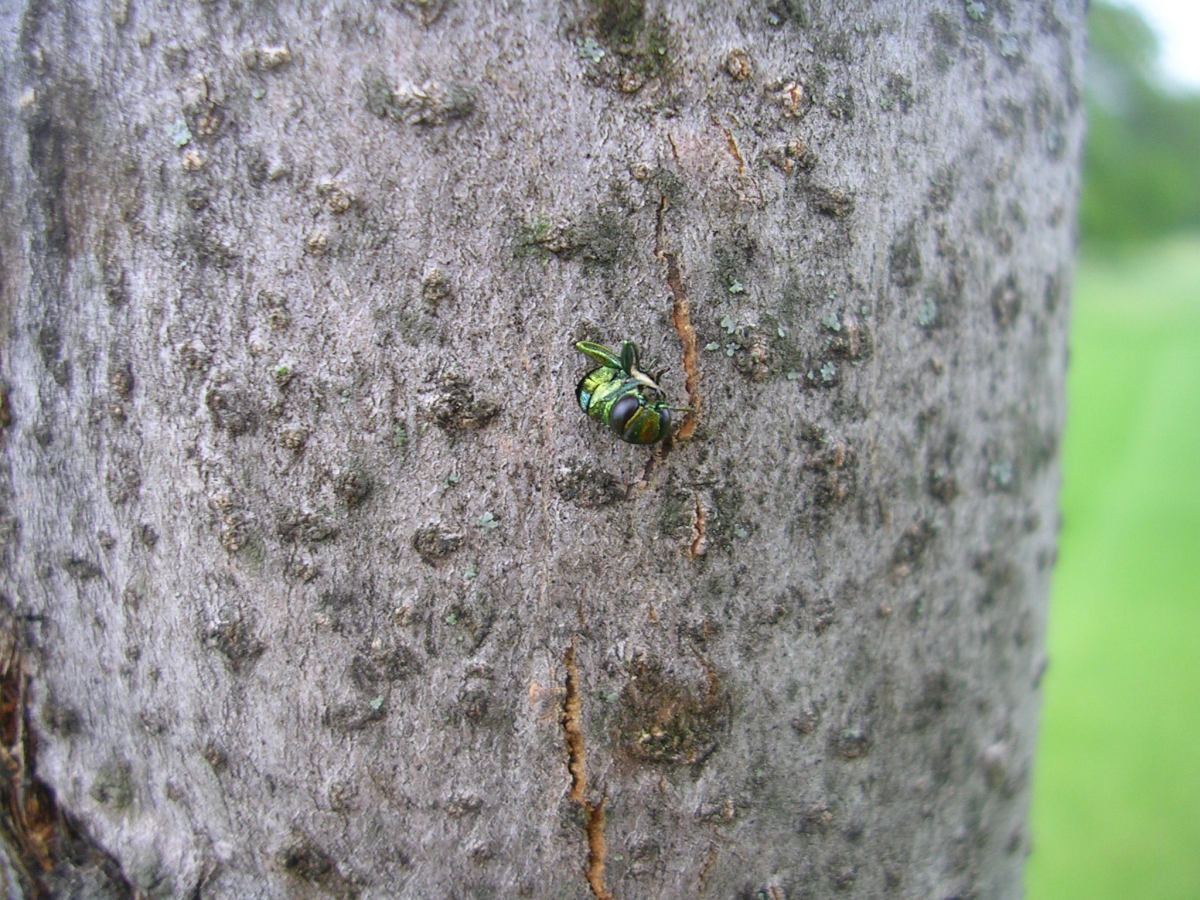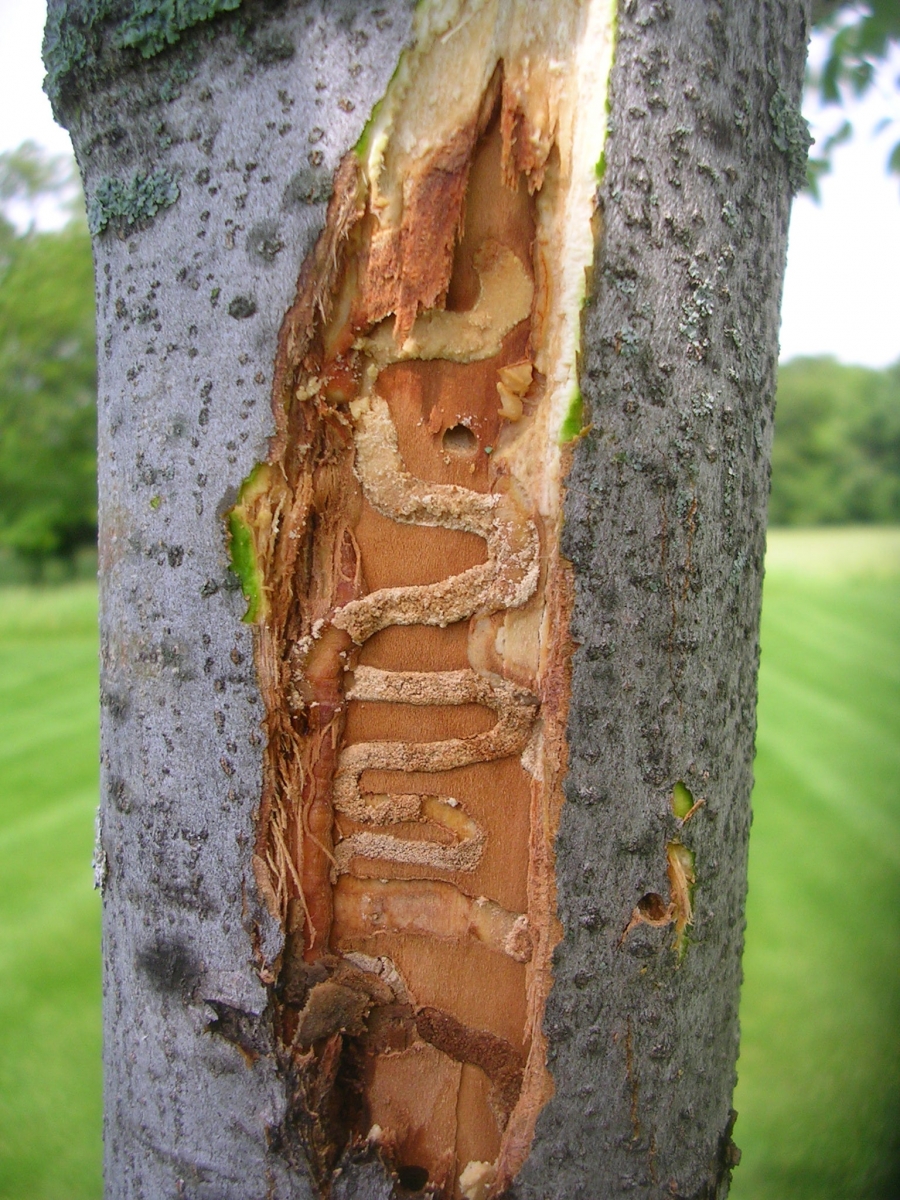The satisfying crack as bat meets ball means two things: The Twins are back and winter is over.
This cherished spring sound relies heavily on bats made from the strong and flexible ash tree. But ash trees are being destroyed by a tiny beetle and that familiar baseball sound may be threatened. Half of MLB players use a Louisville Slugger bat and currently 45% of their wood bats are made from white ash. Emerald Ash Borer (EAB), a small, glitter-green insect, is not only threatening wooden bats, but millions of ash trees across Minnesota.
Since first detected in 2002, these Asian insects have destroyed more than 50 million ash trees in 25 states and caused more than $10 billion to be spent for the removal, treatment and replacement of more than 17 million ash trees. In Minnesota alone, the beetle will cost $10.7 billion in property value losses and ecological services.
“Its continued spread across the country is most likely due to the sale and transportation of firewood,” explains Travis McDonald, district manager for The Davey Tree Expert Company’s South Minneapolis office.McDonald explains that EAB is hard to detect with the untrained eye. “The insects feed on tissue just below the bark, preventing the tree from transporting water and nutrients and eventually killing it. Early decisions about the detection and treatment are critical to saving the ash trees before it’s too late for the tree, and for us.”
Ash trees are popular for their fast-growing, large-canopy and strength to withstand fast-changing weather events. Plus they’re inexpensive.
This invasive insect has the potential to wreak havoc on this popular tree unless early preventative measures are taken. If the insects go untreated, thousands of ash trees will need to be cut down to avoid a public safety problem.


“Research shows that homes within 15 miles of an EAB infestation should take preventative measures,” explains McDonald. “While the EAB pressure wanes on trees further than 15 miles, homeowners should still take an inventory of their ash trees and be on the lookout for signs of the borer.”
McDonald urges homeowners to inspect ash trees in and around their property for signs of borers. He says first homeowners need to identify an ash using these three defining characteristics:
• Bark- ash trees have a diamond pattern in the bark.
• Leaves- ash leaves have 5-9 slender stand-alone leaves on each leaf stem.
• Branches-ash trees are commonly symmetrical and branches will be paired with another branch on the opposite side of the tree.
Next, McDonald suggests inspecting the ash for signs of distress. McDonald says the symptoms are clear. Look for excessive woodpecker activity and missing buds on the outer limbs of the trees. Davey Tree certified arborists will conduct an onsite inspection for free.
Other symptoms to check for:
• Chewing damage on leaf edges
• D-shaped holes chewed through the bark
• Bark splitting or S-shaped tunnels beneath the bark
• Canopy dieback that typically begins in the top one-third of the canopy
• Multiple sprouts of new growth at the trunk
Adult emerald ash borers will be active through winter, tunneling deep into the trees they infest. The larvae, which are very hard to spot, are cream-colored and approximately 1-1/4 inches long. Adults are small, metallic green beetles that are smaller than a penny, about 1/2 inch long and 1/8 inch wide. “Treating the tree is a much less expensive option than replacing it,” says McDonald. “Multiple treatment options are available for homeowners to fit the scope and need of their landscape.” McDonald also recommends homeowners plant different varieties of trees in and around the property so if one species suffers from disease, the entire urban forest won’t be wiped out completely.
EAB has been spotted in Michigan, Arkansas, Colorado, Connecticut, Georgia, Illinois, Indiana, Iowa, Kansas, Kentucky, Louisiana, Maryland, Massachusetts, Minnesota, Missouri, New Hampshire, New Jersey, New York, North Carolina, Ohio, Pennsylvania, Tennessee, Virginia, West Virginia, Wisconsin, Ontario and Quebec, making EAB an international pest problem.
The best place to start is with a free EAB consultation from a professional arborist to determine if EAB is present and the possible treatment methods.
Who to contact: call The Davey Tree Expert Company for plant health care advice today.











